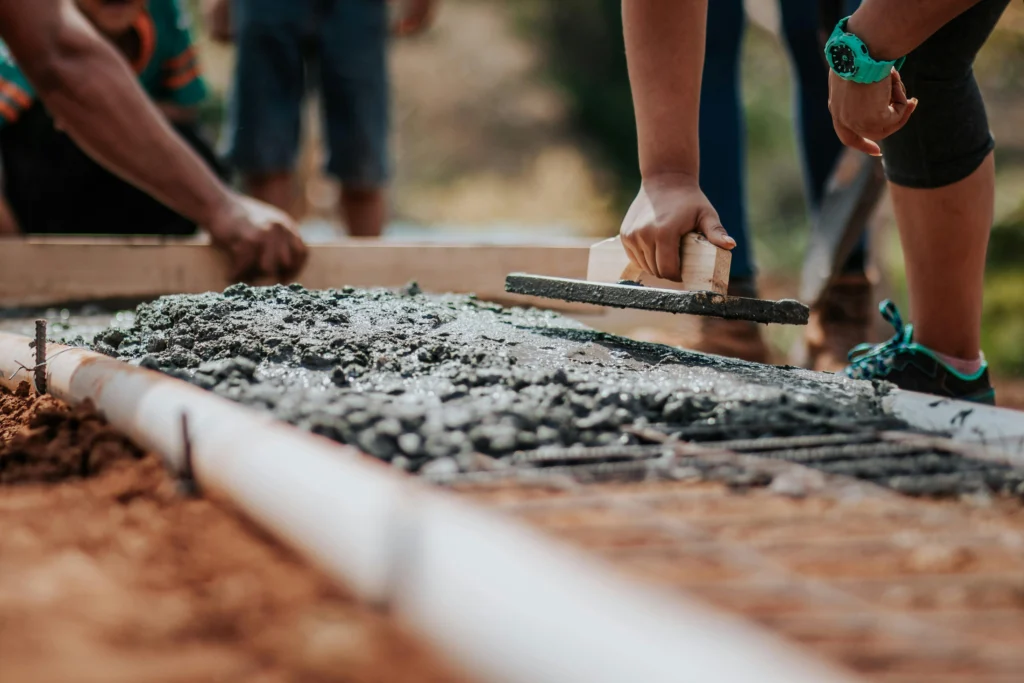Introduction to the Marrakech palm grove
Overview of the Palmeraie
The Palmeraie de Marrakech is a vast natural area of unique biodiversity, extending over several thousand hectares. It is a veritable ecological and historical jewel in the heart of Morocco, attracting thousands of visitors every year. Known for its lush landscapes, the Palmeraie is much more than just a tourist attraction; it is a symbol of sustainability and harmony between man and nature.
Historical and cultural significance
The Palmeraie was founded in the 12th century by the Almoravid dynasty, and represents a rich cultural heritage for Marrakech. It bears witness to ancestral agricultural practices and the ingenuity of irrigation systems used for centuries. The site is considered an essential part of the region's cultural identity, reflecting Moroccan history and traditions.
Climate and geographical features
Benefiting from a semi-arid climate, the Palmeraie de Marrakech enjoys abundant sunshine all year round, favoring optimal palm tree growth. Its unique geography, situated between the desert and the Atlas Mountains, offers a microclimate conducive to biological diversity. The region is characterized by significant temperature variations between day and night, influencing construction and landscaping methods.
The economic importance of the Palmeraie
Role in the tourism industry
The Palmeraie plays a crucial role in Marrakech's tourism sector. As the main natural attraction, it draws visitors from all over the world, actively contributing to the local economy. The luxury hotels, golf courses and wellness centers that dot the Palmeraie also contribute to Marrakech's appeal as a top tourist destination.
Agricultural production and palm tree farming
In addition to tourism, the Palmeraie is the center of flourishing agricultural production, thanks in particular to the cultivation of date palms. These produce high-quality dates for export and local consumption. Not only is date harvesting an important economic activity, it is also deeply rooted in the region's cultural traditions, marking key moments in the local agricultural calendar.
Benefits of building in the Marrakech palm grove
Environmental benefits
Accessibility of natural resources
Building in the Palmeraie of Marrakech offers privileged access to local natural resources. Thanks to the abundance of palm trees and the use of traditional irrigation techniques, building projects have the opportunity to blend harmoniously with the surrounding landscape. The use of local materials, such as raw earth and adobe, helps to reduce the carbon footprint of construction while preserving the region's architectural character.
In favor of renewable energies
The Palmeraie's sunny climate is a major asset for the development of renewable energies. The installation of solar panels is facilitated by continuous exposure to the sun, offering an opportunity for energy autonomy and long-term cost reduction. In addition, the use of sustainable energy solutions contributes to the conservation of the Palmeraie's unique ecosystem.
Economic opportunities
Developing tourism hub
The Palmeraie is a booming tourist hub, representing a considerable economic opportunity for investors and property developers. The development of tourism infrastructures, such as luxury resorts and theme parks, boosts local employment and stimulates the economy. The growing appeal of ecotourism in the region further strengthens interest in sustainable, environmentally-friendly projects.
Real estate and property development
Investing in the Palmeraie of Marrakech can be extremely lucrative due to the ever-increasing real estate and land values. The region's natural beauty, combined with Marrakech's reputation as a prestigious destination, attracts buyers from all over the world. This growing demand generates property appreciation, making real estate investment particularly attractive in this exclusive environment.
Social and cultural aspects
Potential for promoting local culture
Building in the Palmeraie enhances and promotes the rich local culture. By incorporating local cultural elements into architectural projects, such as Berber motifs and traditional architectural styles, developers are helping to preserve the region's cultural heritage. These initiatives also promote the sustainable development of the region by reinforcing local identity and attracting cultural tourism eager to discover these riches.
In short, building in the Marrakech palm grove offers numerous environmental, economic and cultural advantages. These assets encourage the development of projects that respect and are in harmony with the region's exceptional ecosystem, while offering promising economic prospects and preserving the area's cultural richness.
Building constraints in the Marrakech palm grove
Environmental limitations and sustainability
Rational management of water and natural resources
Construction in the Palmeraie of Marrakech presents significant challenges in terms of managing water resources, a precious resource in this arid region. Traditional irrigation methods, while effective for agricultural practices, need to be modernized to meet the growing water requirements of new construction. This requires the integration of water-saving technologies and the development of efficient management systems to avoid the depletion of natural resources. Preserving the water balance of the Palmeraie is essential to maintain its unique ecosystem and flourishing biodiversity.
Environmental impact on palm trees and biodiversity
The proliferation of construction activities can have a negative impact on the region's emblematic palms and surrounding biodiversity. Construction sites can disrupt natural habitat, leading to reduced populations of some native species. It is crucial to adopt environmentally-friendly construction practices to minimize ecological damage. Environmental impact assessments must be carried out systematically prior to any project in order to preserve this rich biodiversity. Ecological compensation measures, such as reforestation and the creation of ecological corridors, should be considered to mitigate potential negative effects.
Legal and regulatory constraints
Strict building regulations
As the Palmeraie is a protected area, it is subject to strict urban planning and building regulations to preserve its natural and cultural heritage. Developers must comply with a set of laws and standards governing the size, architectural style and environmental impact of constructions. These regulations can limit the creative freedom of architects and engineers, making the construction process more complex and costly. However, they are essential to ensure the sustainable development of the region, and to guarantee that all new construction respects the integrity of this historic site.
Approval and building permit process
The process of obtaining the necessary permits for construction in the Palmeraie can be long and complex. Developers must navigate through various administrative channels to obtain permits, a task that can result in significant delays and additional costs. Environmental impact assessments, public consultations and requirements to comply with certain sustainable practices also add to the complexity of the process. Despite these challenges, it is essential that these rigorous procedures are scrupulously adhered to to avoid any deterioration of the Palmeraie.
Economic and social consequences
High cost of construction projects
The costs associated with building in the Palmeraie are generally higher than in other areas of Marrakech, due to regulatory restrictions and environmental challenges. Developers often have to invest more in environmentally-friendly technologies and compliance with strict standards imposed by regulators. These additional costs can represent a barrier for some investors, slowing down economic development in the region. However, this extra cost can be offset by the ecological and cultural added value of projects built in harmony with the environment.
Impact on the local community
Construction in the Palmeraie could lead to social and economic changes for local communities. While development can stimulate the local economy and create jobs, it can also lead to conflicts of interest between conservation and development. It is therefore essential to involve local communities in the development process, to ensure that their needs and traditions are respected. Efforts must be made to ensure that economic benefits actually accrue to the local population, preserving the balance between economic development and cultural preservation.
Future prospects and sustainable development in the Marrakech palm grove
Technological innovations and green construction
Building smart villas
The Palmeraie region of Marrakech lends itself ideally to innovation in the construction of intelligent villas, incorporating modern home automation technologies. This type of construction not only enables efficient energy management, but also offers optimum comfort thanks to advanced automation of lighting, security and air-conditioning systems. The villas designed by Life Smart Home in Marrakech are a perfect example of how green architecture and home automation technology can combine to create contemporary residences, while preserving harmony with the natural environment of the Palmeraie.
Use of sustainable, environmentally-friendly materials
As part of sustainable development, the use of eco-friendly materials is crucial for new construction in the Palmeraie. Adopting building techniques based on adobe or pisé not only reduces the carbon footprint, but also helps maintain a stable indoor temperature, adapted to the region's climatic variations. In addition to their low environmental impact, these materials blend harmoniously into the natural landscape, respecting Morocco's traditional architectural heritage.
Supporting local initiatives for inclusive growth
Working with local craftsmen
Involving local craftsmen in construction and renovation projects promotes an inclusive economy. Ancestral skills in artisanal design bring invaluable added value to projects, whether through the creation of bespoke Berber motifs or the integration of traditional decorative elements. These collaborations ensure the preservation of local traditions while providing economic opportunities for local people.
Education and awareness projects
To reinforce sustainable development, it is essential to set up educational projects that raise community awareness of environmental issues and the importance of conservation. These initiatives can include workshops on energy efficiency, waste and natural resource management, and the benefits of green building. In addition, promoting these values to visitors helps to bolster the Palmeraie's ecotourism sector, while supporting local economic growth.
Integrating tourism and cultural projects
Development of ecotourism trails
The development of ecotourism trails in the Palmeraie can play a key role in promoting the region while ensuring its preservation. These routes enable visitors to discover the site's biodiversity and cultural heritage, while promoting environmentally-friendly tourism. In collaboration with local companies such as Life Smart Home, these projects can incorporate educational elements on the importance of sustainable construction and green technologies.
Organizing cultural events
Organizing regular cultural events in the Palmeraie can boost tourist interest while supporting local artists and craftspeople. These events provide an opportunity to showcase the cultural richness of Marrakech, through art exhibitions, concerts or craft fairs. By strengthening the link between culture, tourism and sustainable economic development, the Palmeraie can position itself as a hub of responsible cultural and tourist activity.
FAQ
What are the main advantages of building in Marrakech's Palmeraie?
Building in the Palmeraie offers environmental, economic and cultural benefits, with access to local natural resources, a strong capacity to integrate renewable energies and attractive economic opportunities through tourism and real estate development.
What are the major constraints on construction in this region?
Constraints include strict water management, potential environmental impact on biodiversity, complex planning regulations and high costs associated with the required sustainable construction standards.
How are new technologies impacting construction in the Palmeraie?
Home automation technologies and green building innovations offer solutions for creating smart villas, reducing the environmental footprint while increasing the comfort and energy efficiency of homes.
Why is it important to work with local communities?
Working with local communities ensures that economic benefits accrue to local people, preserves craft and cultural traditions, and reinforces the region's sustainable and inclusive development.
How can tourism projects be developed responsibly?
The development of ecotourism itineraries and the organization of cultural events allow us to showcase the region in a respectful way, raising awareness among visitors and residents alike of the importance of conservation and sustainability.
Conclusion
The Palmeraie of Marrakech offers a unique setting for construction projects that combine modernity and respect for the environment. The challenges and constraints of building in this region can be overcome through innovative approaches to sustainability, supported by close collaboration with local craftsmen and communities. Life Smart Home has positioned itself as a key player in the realization of personalized projects, providing quality support in the construction or renovation of villas in Marrakech. Don't hesitate to contact us for a tailor-made quote or to view our completed projects, and let us help you realize your architectural ambitions in harmony with the prestigious surroundings of the Palmeraie.



 by
by